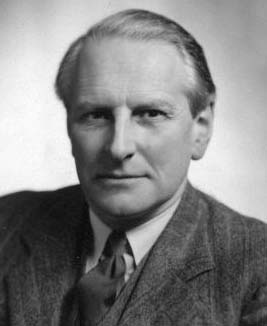


 تاريخ الرياضيات
تاريخ الرياضيات
 الرياضيات في الحضارات المختلفة
الرياضيات في الحضارات المختلفة 
 الرياضيات المتقطعة
الرياضيات المتقطعة
 الجبر
الجبر
 الهندسة
الهندسة 
 المعادلات التفاضلية و التكاملية
المعادلات التفاضلية و التكاملية 
 التحليل
التحليل
 علماء الرياضيات
علماء الرياضيات |
Read More
Date: 14-7-2017
Date: 20-7-2017
Date: 25-7-2017
|
Died: 4 July 1956 in Edinburgh, Scotland

Bernard Childs's father was Charles Alfred Childs (born in Kingston, Surrey about 1865) who was a commercial clerk. His mother was Emily G Childs (born in Kingston about 1866). In 1911, Charles Bernard Childs, our mathematician, was studying at The College, Hadham Road, Bishop's Stortford.
Childs studied at the University of Birmingham, graduating with a B.Sc. in 1920. A quick calculation shows that he was twenty-five years old when he graduated and this was because he began his studies at Birmingham a few years after leaving secondary school. He remained at Birmingham undertaking research for a doctorate in Natural Philosophy and this was awarded in 1922 for his thesis The thermomagnetic properties of carbon steels at temperatures round the Curie point.
Childs was appointed as an Assistant Lecturer in Natural Philosophy at Edinburgh University in 1922. He was promoted to lecturer in 1924. In 1956 he became a Senior lecturer and remained in this position until his death five years later.
Shortly after arriving in Edinburgh as an Assistant, Bernard Childs joined the Edinburgh Mathematical Society in March 1923. He was elected to the Royal Society of Edinburgh on 5 March 1956, his proposers being Norman Feather, Robert Schlapp, James Paton, Thomas R Bolam.
An obituary, written by Norman Feather, appears in the Royal Society of Edinburgh Year Book 1957, pages 10-12.
We give a version of this obituary at THIS LINK.
Finally we note that Childs had many interests other than his subject. Feather writes [1]:-
He was founder Chairman of the Scottish Community Drama Association from 1926 to 1930, when he was appointed to the office of Vice-President which he held for the remainder of his life. Parallel to this interest, with a touch of science intruding, was his interest in the cinema: he held successively the offices of Vice-Chairman (1948 - 51), Chairman (1951 - 54) and Secretary (1954 - 56) of the British Universities' Film Council. Over a longer period he was an office-bearer of the Edinburgh Association of University Teachers (Secretary, 1933 - 35 and 1951 - 53; Vice-President, 1953 - 56).



|
|
|
|
التوتر والسرطان.. علماء يحذرون من "صلة خطيرة"
|
|
|
|
|
|
|
مرآة السيارة: مدى دقة عكسها للصورة الصحيحة
|
|
|
|
|
|
|
نحو شراكة وطنية متكاملة.. الأمين العام للعتبة الحسينية يبحث مع وكيل وزارة الخارجية آفاق التعاون المؤسسي
|
|
|